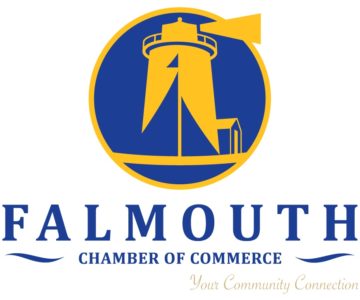By Doug Karlson
With the advent of online shopping and the decline of large department stores, many traditional malls across the country face extinction.
At the same time, as towns and regions grapple with how to spark long-term economic growth, new thinking about what a mall is may be just what the doctor ordered for the town of Hanover.
Hanover, in northern Plymouth County, about 20 miles southeast of Boston, is home to the Hanover Mall. Built in 1971, it’s a classic enclosed mall located near the intersection of Route 3 and Route 53. The mall has dozens of retailers, restaurants, and service providers, ranging from Outback Steakhouse to Yankee Candle, and is anchored by Macy’s, Walmart, and Sears. JC Penney used to be an anchor, but closed its Hanover Mall location in 2015.
In recent years, the mall has struggled, as have similar malls around the country. Hanover Mall also faces stiff competition in the region, such as the large and dominant South Shore Plaza in Braintree, the upscale Derby Street Shoppes in Hingham, and the convenient Colony Place in Plymouth.
One challenge facing traditional malls is the explosion of online shopping from companies like Amazon. As consumers go online, they have fewer reasons to spend time at the mall, and as large retailers like Sears, Macy’s, and JC Penney struggle, they no longer serve as effective anchors to attract shoppers to other small businesses. Last year, Macy’s announced plans to close 100 stores.
According to William Hall, former Senior Director of Real Estate Research for JC Penney and now principal of a Dallas-based real estate advisory firm, “The problems challenging Hanover Mall today are typical of those faced by C malls (struggling malls) all over the U.S., including overbuilding and intense competition, vacancies created by department store closings and the bankruptcies of the national specialty store chains, and, on the margin, the consumers’ shift to online shopping. The mass closing of department stores, especially in secondary locations like Hanover Mall, render it especially vulnerable as chains like Macy’s, Sears, and JC Penney continue to retrench.”
The closings of anchor stores can trigger exit clauses in small shop leases, explained Hall, resulting in empty malls.
Reimagining a mall
The alternative is a paradigm shift in what a mall is.
“Malls are changing,” says Peter Forman, President and CEO of the South Shore Chamber of Commerce. If traditional anchor stores no longer draw crowds, the solution for malls is to transform into village centers, and to offer community activities like concerts and fairs, as well as entertainment like movie theaters, bowling alleys, bars, and restaurants.
One firm that is redeveloping malls along that concept is Cincinnati-based Peco Real Estate Partners (PREP). In November, PREP purchased Hanover Mall from C.W. Capital Asset Management of Needham for $39.5 million.
Founded in 2015, PREP says its mission is to be the industry leader in transforming retail real estate assets. To do that, it identifies underperforming properties, such as enclosed malls, and gives them a total redesign and rebranding.
In line with that, Hanover Mall will become Hanover Crossing, and the existing interior mall will be torn down and replaced with an exterior mall. That’s expected to happen in 2020.
“What we’re looking for is great real estate in terms of location,” says Lloyd Sova, Vice President of Development at PREP.
Located on the South Shore near Boston, the town of Hanover fits the bill. The town’s demographics are strong, too. Hanover and the surrounding region is credited with being well-governed, having excellent public schools, an educated workforce, proximity to rail transit, strong quality of life, accessibility to employment, and recreational and natural resources. It has a median family income of about $87,000.
According to Sova, the old-fashioned concept of malls − enclosed, interior shopping centers anchored by large retailers like Sears or J.C. Penney − no longer works. He predicts that only the top 10 percent of malls are going to survive.
A new design
Sova says Hanover Crossing will be very similar in concept to another mall developed by PREP called The Shoppes at Parma, a 1.2 million square foot project in Parma, Ohio. The architect is Cleveland-based Richard L. Bowen & Associates.
To transition from the existing mall to the redesigned Hanover Crossing, Sova says they may construct one building first, before demolishing the existing mall. This will allow existing interior tenants to relocate without interrupting business. Tenants on the perimeter of the current mall will not be affected.
PREP is now focused on securing an anchor for Hanover Crossing. What that will be has yet to be determined, but it will be a business, like a movie theater, market, or restaurant, that can attract a large clientele. The goal is also to offer a complete variety of businesses. Traditional malls often have major gaps in what they offer to customers, says Sova. For example, they may not have food markets or restaurants. Modern malls are designed more as village centers, such as the Derby Street Shoppes in Hingham – a place where people gather for food, shopping, entertainment, and community events.
Such venues, explains Sova, “draw people to the mall for longer periods of time to support more shopping. They have to offer convenience as well as experience.”
He maintains that redesigned malls are still viable retail destinations, despite the growth of online shopping.
Hall agrees. “The South Shore remains a vibrant and attractive market and a redeveloped and rebranded Hanover Crossing can succeed, provided it offers local residents something unique and convenient. Most likely, demolition of the interior mall will be a key element in the rebirth of Hanover Crossing, as shoppers seem to prefer the convenience of the open-air configuration these days. It also helps that developer PREP has experience with transformations of this sort, recently completing the redevelopment of the former Parmatown Mall in suburban Cleveland into The Shoppes at Parma, an open-air, multi-use center.”
The new concept of malls offers an economic advantage to tenants, as well. By converting them from large enclosed structures to open outdoor shopping centers, costs to the retailers go down. That’s because common charges are higher in interior malls, which require more staffing, maintenance, heating, and cooling. If the costs to tenants are lower, businesses with lower sales can afford to be there.
It’s a concept embraced by the South Shore Chamber of Commerce.
Forman says shopping centers can be more akin to a modern-day downtown, a destination, with community activities and events, and a mix of professional and government offices and housing. Such places can be key to attracting young people to settle in a community, and are essential to maintaining a strong regional economy.
“You’ve got to find different ways to bring people to the property,” he says.
PREP’s approach also fits in well with the South Shore’s strategy to strengthen its economy.
Despite solid demographics and a good location, Hanover, and the South Shore in general, are not without challenges. “We desperately need to attract young people to the South Shore and to retain retiring baby boomers,” said Forman.
One way to do that is for South Shore communities to develop mixed-use activity centers, such as Quincy Center, Southfield at the former South Weymouth Naval Air Station, and Cordage Park in Plymouth.
According to a study commissioned by the chamber in 2014, as residential property values and commercial leasing rates rise in Boston, there is an opportunity for economic growth on the South Shore, provided the infrastructure is in place.
The study, “South Shore 2030: Choosing Our Future,” was conducted by Market Street Services Inc. and released in January 2016.
Forman said he hopes the redevelopment of Hanover Mall includes housing, an important aspect of the study, which stresses the need to attract younger people and families, diversify the economic base, foster economic strength through growth in a broad mix of industries, and attend to a “sense of place and community.”
According to the study, “there is room for a suburban ‘smart-growth’ where quality of life is enhanced by a greater accessibility to work by foot or mass transit but also by reducing ‘car time’ because employment is located closer to home. Vibrant centers of activity do not have to be restricted just to urban core areas; they can be created in smaller districts with quiet neighborhoods nearby.”
The study identifies targets for economic growth such as headquarters operations and financial and insurance activities, but also stresses the need for diversifying the existing base. It also emphasizes the importance of fostering a friendly business climate, improving mobility, enhancing entrepreneurial capacity, creating diverse quality of life amenities, greater support for existing businesses, and strong relationships with investors who can bring in high-paying jobs.
The South Shore Chamber of Commerce is also analyzing the housing situation and plans to issue a report in the fall. Adding housing to a mall development creates a built-in market for the businesses there, says Forman.
Public/private collaboration
Public/private collaboration is cited as a key element in the region’s economic plan. Forman noted that executives from PREP have revived other tired malls in the Midwest, and showed a willingness to work with town officials on the project.
“Everyone in the town had an interest in working with the developer of the mall and making it more valuable,” said Forman. “You don’t want an investor or a developer to be afraid of making improvements because they’ll face higher tax payments before they get a chance to earn money on their investment.”
To make the project financially viable, the town and developer entered into a TIF, or Tax Increment Financing, agreement. The agreement was approved at Town Meeting in June. A TIF is a property tax incentive used by towns to promote redevelopment.
Under a TIF agreement, a base assessment is set. For Hanover Crossing, that base assessment is $39.5 million. Increases in the assessed value attributable to improvements made by the developer are then fully or partly exempt from taxation according to a predetermined schedule. The agreement between the town of Hanover and PREP lasts 16 years. Ultimately, the tax base of the town is increased if the property is redeveloped, as opposed to the alternative, where the property is not redeveloped, declines in value, and results in lower property tax revenue.
At Town Meeting, both the town and the South Shore Chamber of Commerce spoke in favor of the agreement.
“I think it can be very positive,” said Forman. The challenge will be to see how it fits in with the Route 53 corridor. “You want something that becomes a focal point for the town and fits in with what’s happening on the South Shore.”
Can reimagining malls as village centers be a future blueprint for commercial and economic success? Hall thinks so.
“Overall, I am optimistic that malls will continue to evolve and serve their communities across the U.S. Some analysts predict as many as 25 percent to 30 percent of the nation’s 1,200 or so malls will go out of business in the next decade. While many of these weaker centers will cease to be retail destinations, most, especially in desirable suburban areas like the South Shore, will likely evolve into some sort of hybrid mixed-use project combining retail, residential, and office elements and incorporating non-traditional uses such as libraries, community colleges, and medical clinics.”
Mall Makeover: New thinking about the retail experience may help regional economy





















